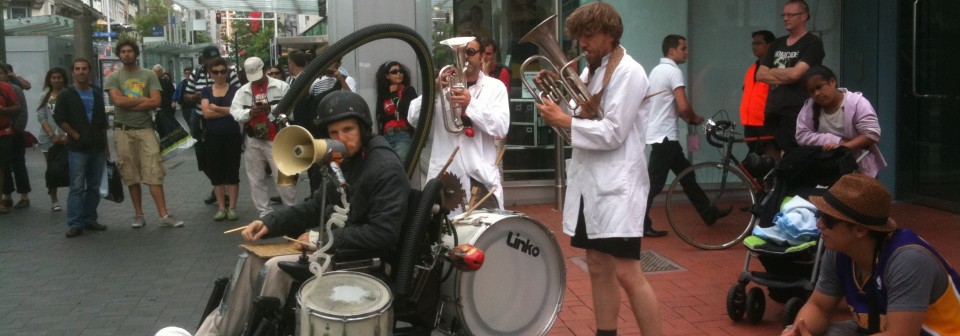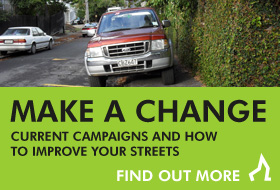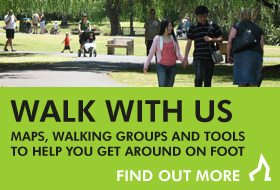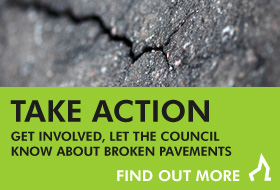We need you to became an advocate for better walking conditions.
Active citizens play a vital role in making sure our communities are walker-friendly. Pedestrian advocates share the joys of walking and encourage others to walk more; they raise awareness of unsafe and uninviting walking conditions; and they urge community leaders and public officials to make streets safer for walking.

Here are some of the elements of successful advocacy:
Organize. Even small organizations have more clout than individuals, more energy and more expertise.
Persist. If public officials know that you are never going away, they will eventually deal with you. Be prepared for it to take a while.
Offer solutions. Rather than just oppose a bad project, provide an alternative that improves the status quo.
Respect opponents. Try to understand their positions. Be courteous. Challenge ideas; don’t attack people.
Develop coalitions. Working with other groups can translate into greater political strength.
Get expert help. Technical assistance and support from traffic engineers, planners, landscape architects and lawyers bolsters your position. To better understand the process, talk to your local or regional planning department or agency.
Have fun. Enjoy small victories. Share good food. Laugh when things get ridiculous. If you don’t have fun, you won’t last.
TOOLS
The challenges to safe walking often are obvious. How to overcome them can be less clear. These tools will help you identify the problems pedestrians face and offer solutions for overcoming and improving your walking environment.
The following resources are from Walk Boston and we are developing something similar for NZ.
Ped Advocacy 101 — Sometimes achieving a solution is as easy as knowing the right person to call. This slide show provides citizens with effective techniques for pedestrian advocacy initiatives at the community level.
Ped Advocacy 101
Ped Advocacy 201 — Equips citizens and community officials with technical information and skills to improve walking conditions
Ped Advocacy 201
A More Walkable Community — Is chock full of quick fixes for crosswalks, WALK signals, sidewalks and streets. It also includes basic guidelines for larger advocacy objectives.
A More Walkable Community
Why Places Matter.
This following resource talks about why some myths are not true. Giving local people a say in the planning and shaping of their own neighbourhoods is essential to grow local economies, cut crime and improve public health, says Why Places Matter, published by Living Streets UK.
Download Why Places Matter from Living Streets UK
Myths dispelled in Why Places Matter
- Community participation is a barrier to creating better places
- We don’t have to worry about the past, we want something new
- We can’t please everyone
- You have to go to the gym to get fit
- 30 kph is not enforceable
- Parking is the answer to local high streets regeneration
- Public gardens and parks are a luxury






